Try Default

See how revenue teams automate revenue operations with Default.

Key Takeaways
- Default — best all-in-one for RevOps orchestration: Consolidates lead capture, routing, enrichment, scheduling, and forecasting in one no-code platform, giving teams full-funnel control without relying on multiple tools.
- BoostUp — best for forecast accuracy and inspection: Focused on deal-level risk scoring and audit trails, helping leaders validate pipeline health and forecast reliability.
- People.ai — best for CRM hygiene and activity capture: Automatically logs emails, meetings, and contacts to fill rep data gaps and improve visibility into early-stage deal activity.
- Gong — best for conversation-driven pipeline insights: Analyzes calls and emails to surface buyer sentiment, deal risks, and coaching opportunities beyond what CRM fields reveal.
If you’ve ever run RevOps on Clari, you probably know the story: forecasts look clean at the board level, but upstream tells a different story. Leads are slow to route, enrichment breaks, data quality drags, and by the time a deal hits pipeline, it’s already carrying hidden risk.
Clari is excellent at late-stage visibility, but it stops short of solving the day-to-day RevOps grind.
That’s why many teams start looking elsewhere.
Maybe you need earlier visibility into lead capture. Maybe you’re tired of stitching together form builders, routers, and schedulers around your CRM. Or maybe you just can’t justify Clari’s price tag when it only solves one piece of the puzzle.
In this guide, we’ll walk through the best Clari competitors and alternatives in 2025 — from full GTM orchestration platforms like Default to specialized tools for forecasting, activity capture, or deal risk analysis. You’ll see how each stacks up on real-world use cases, core strengths, pricing, and RevOps fit, so you can cut through the noise and make a sharper call.
Default
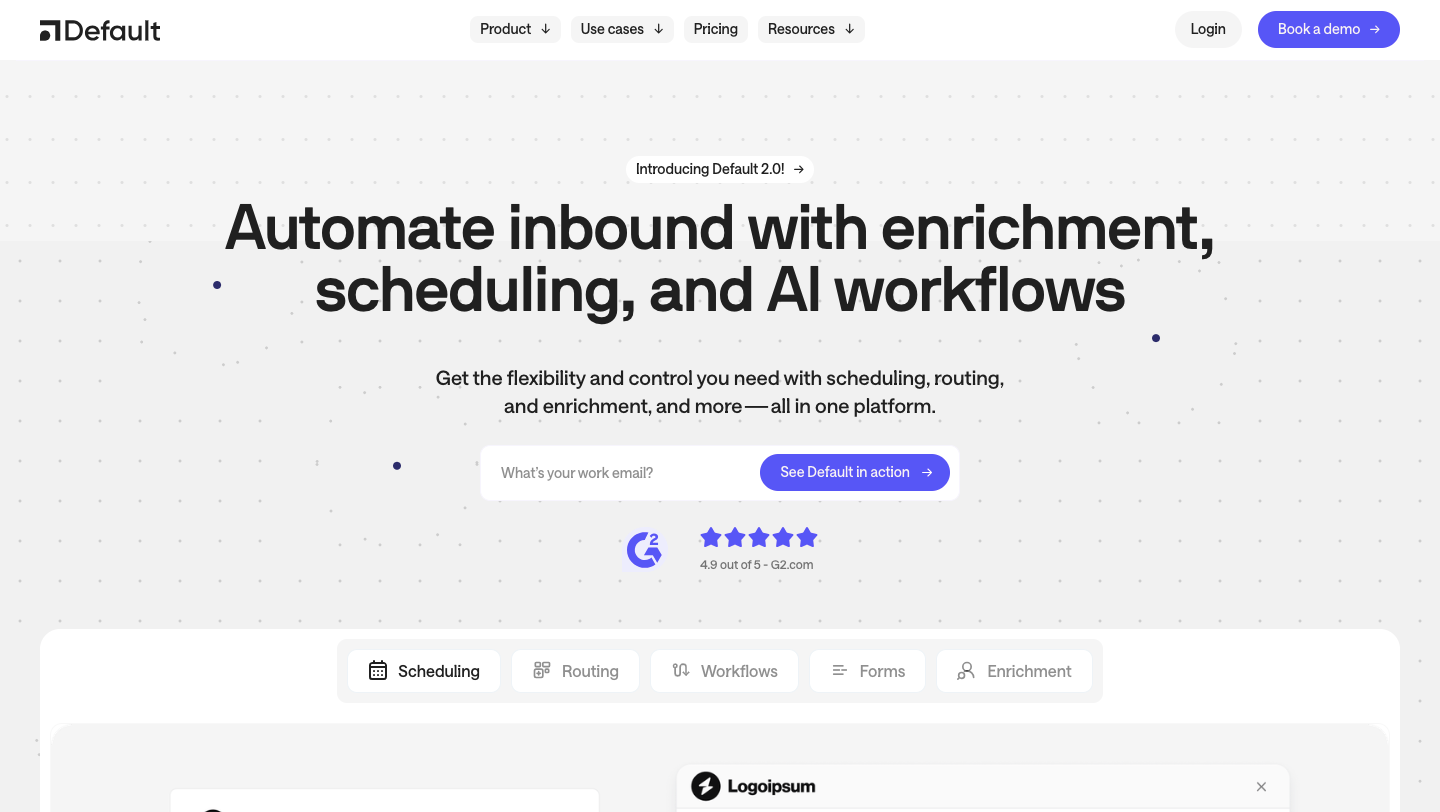
Orchestrate your full lead-to-revenue engine from one flexible, no-code platform.
Default is more than a forecasting tool—it’s a complete GTM orchestration system for high-growth RevOps teams. It unites inbound capture, lead routing, CRM enrichment, meeting scheduling, and forecasting in one connected canvas. The result: fewer tools, cleaner data, and faster execution without relying on engineering.
Where Clari stops at late-pipeline visibility, Default gives you end-to-end control. From the first form fill to the final-stage commit, every motion is mapped, automated, and measurable.
Key features
AI-powered routing and GTM workflows

Route leads instantly by territory, ownership, or intent score. Trigger CRM updates, alerts, enrichment calls, or calendar bookings in seconds—no engineering required.
Revenue canvas to map the buyer journey
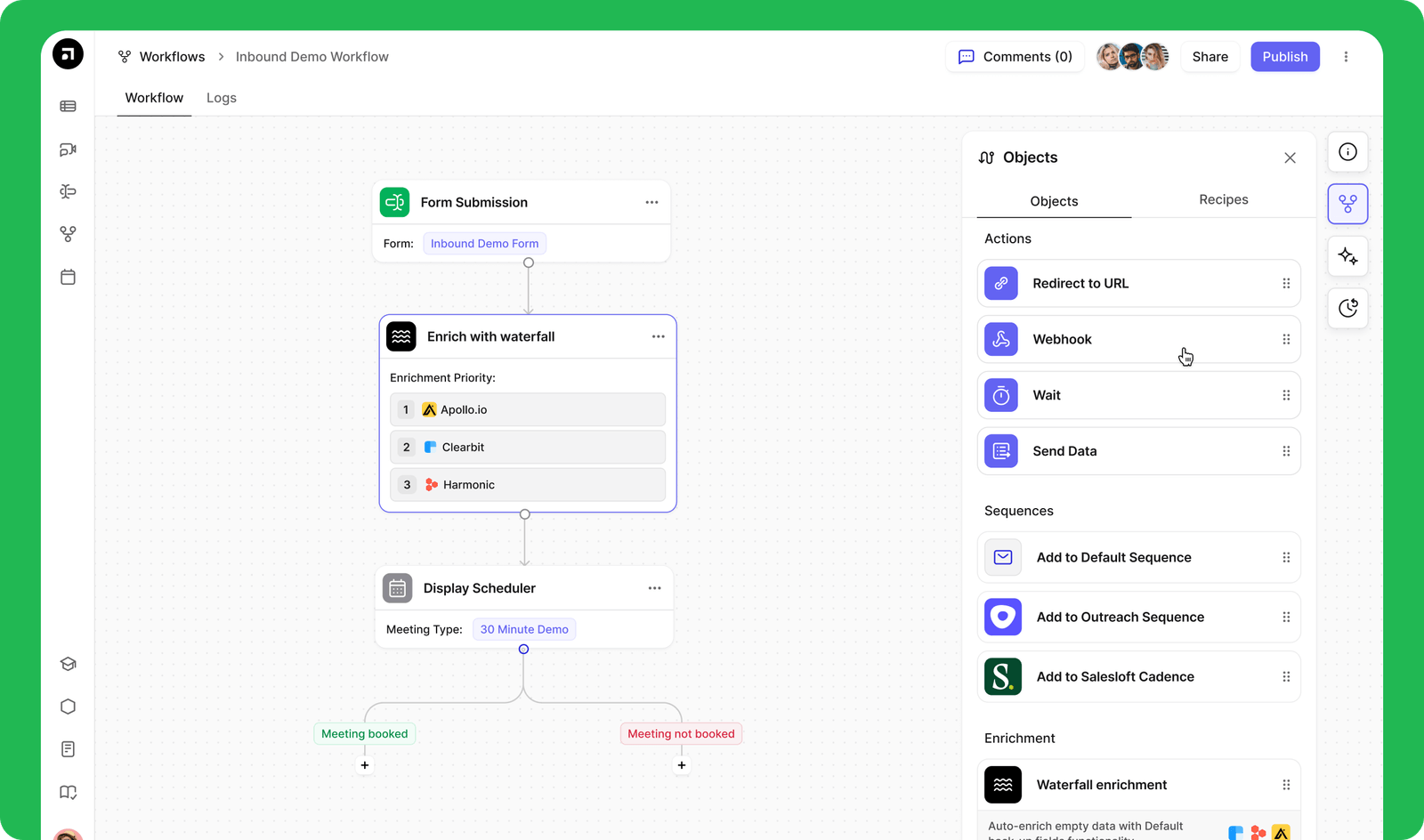
Drag-and-drop every GTM flow. Track how leads move from capture to qualified opps, spot bottlenecks, and test changes without risking CRM data.
Bi-directional CRM and sales tool integrations
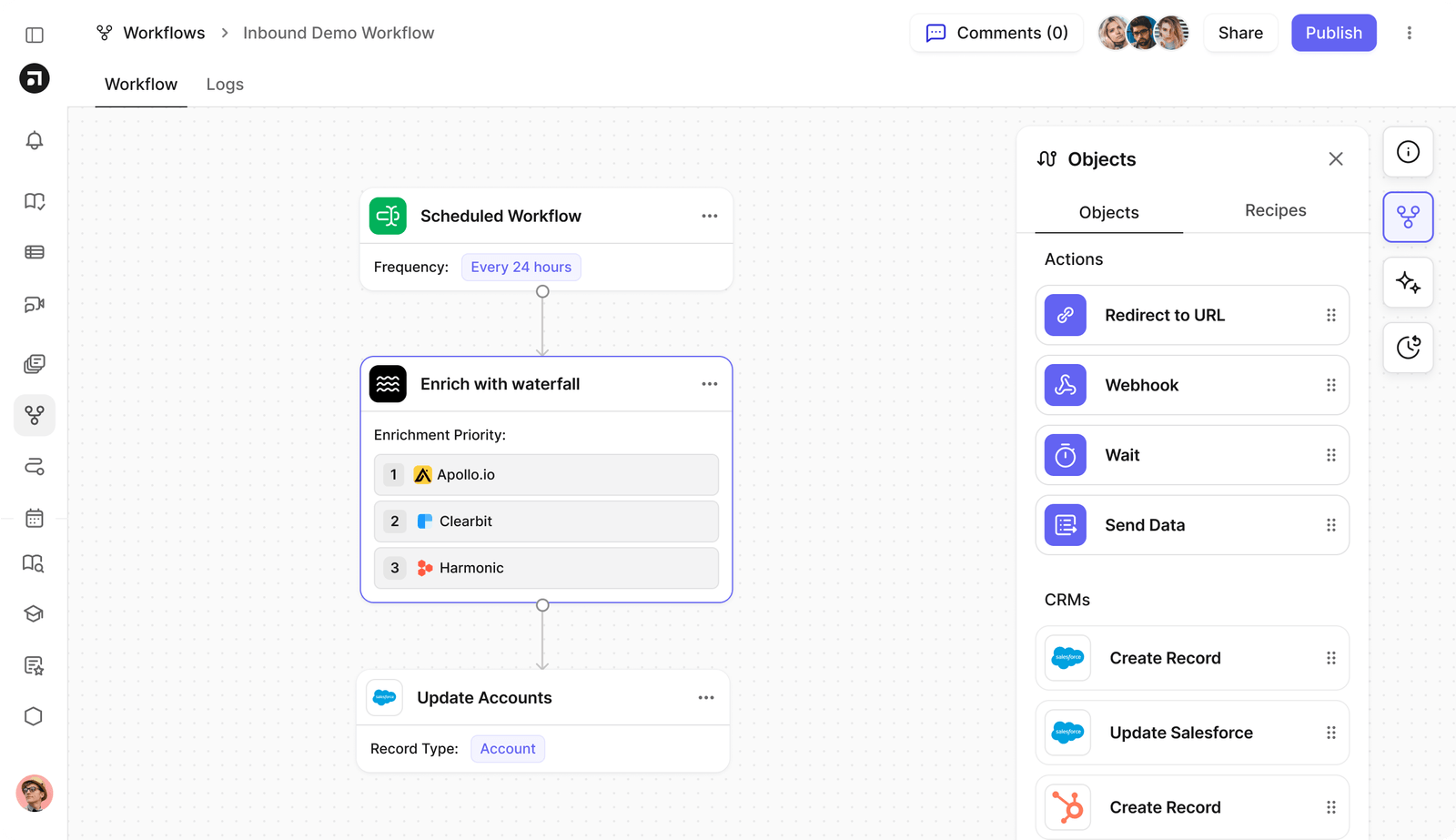
Keep Salesforce, HubSpot, Segment, Salesloft, and more fully synced. Data stays accurate and actionable across the stack.
Pricing
Default’s pricing combines a platform fee with user licenses, but only for revenue-facing seats — editors are always free. This keeps scaling costs predictable, unlike tools that charge for every user regardless of role.
Where Default shines
- True RevOps orchestration – replaces form builders, lead routers, enrichment tools, sales schedulers, and sales workflow automation.
- No-code GTM agility – Launch or adjust workflows in minutes without developer cycles.
- Full-funnel visibility – See what happens before the CRM, so you can fix issues upstream, not just react downstream.
Where Default falls short
- Forecasting-only buyers may prefer Clari or Aviso if predictive forecasting is the only requirement.
- Cross-functional alignment needed to unlock full value—Default spans marketing, sales, and ops workflows, so the impact is greatest when these teams collaborate on ownership.
Customer reviews
“Love how as an SDR we get notified when we get new inbounds- speed to lead is key.” - Chris E., verified G2 reviewer
“We've been using it mostly for attribution and tracking lead sources. Great experience so far and I really like the UX/UI.” - Fernanda S., verified G2 reviewer
Who Default is best for
- RevOps leaders wanting full-funnel control from lead capture to forecasting.
- GTM teams replacing multiple tools with one unified platform.
- Ops teams needing no-code speed to adapt workflows without engineering.
Stop stitching point tools together. Orchestrate your RevOps in one canvas.
Book your interactive demo to see how Default unifies GTM execution from form fill to closed-won.
BoostUp

Forecasting isn’t just about hitting a number — it’s about knowing which deals will hold and which won’t. BoostUp focuses here, giving revenue leaders deep deal-level risk scoring and audit trails to build forecasts with more accountability.
It’s strong for teams that want granular inspection, though it stops short of handling broader GTM workflows like routing or enrichment.
Key features
- Forecast audit trails – Track every forecast change—by whom, when, and why—to enforce process and spot last-minute risks.
- AI deal risk scoring – Analyze CRM data, rep activity, and buyer silence to flag vulnerable deals early.
- Multi-layer forecast rollups – View forecasts by region, team, or segment, with drill-down into individual deals and reps.
Pricing
Where BoostUp shines
- Deep risk modeling – Behavior-based lead scoring gives more reliable pipeline confidence.
- Built-in accountability – Ideal for CROs tracking rep commits and reducing “gut feel” forecasting.
Where BoostUp falls short
- Setup complexity – Requires disciplined CRM processes and cross-team buy-in.
- No pre-pipeline visibility – Analysis starts at opportunity stage.
Customer reviews
“I like that it offers easy integration into our crm, easy to use in terms of editing forecasts and other fields quickly. It does a good job at offering a full picture view that is easily digestible. At times the user interface can be difficult to maneuver because the page resets and it takes away filters that have been applied to your search.” - verified G2 reviewer
Who BoostUp is best for
- Mid-market and enterprise RevOps teams needing accurate, risk-aware forecasting.
- CROs looking for transparent deal inspection and rep accountability.
People.ai
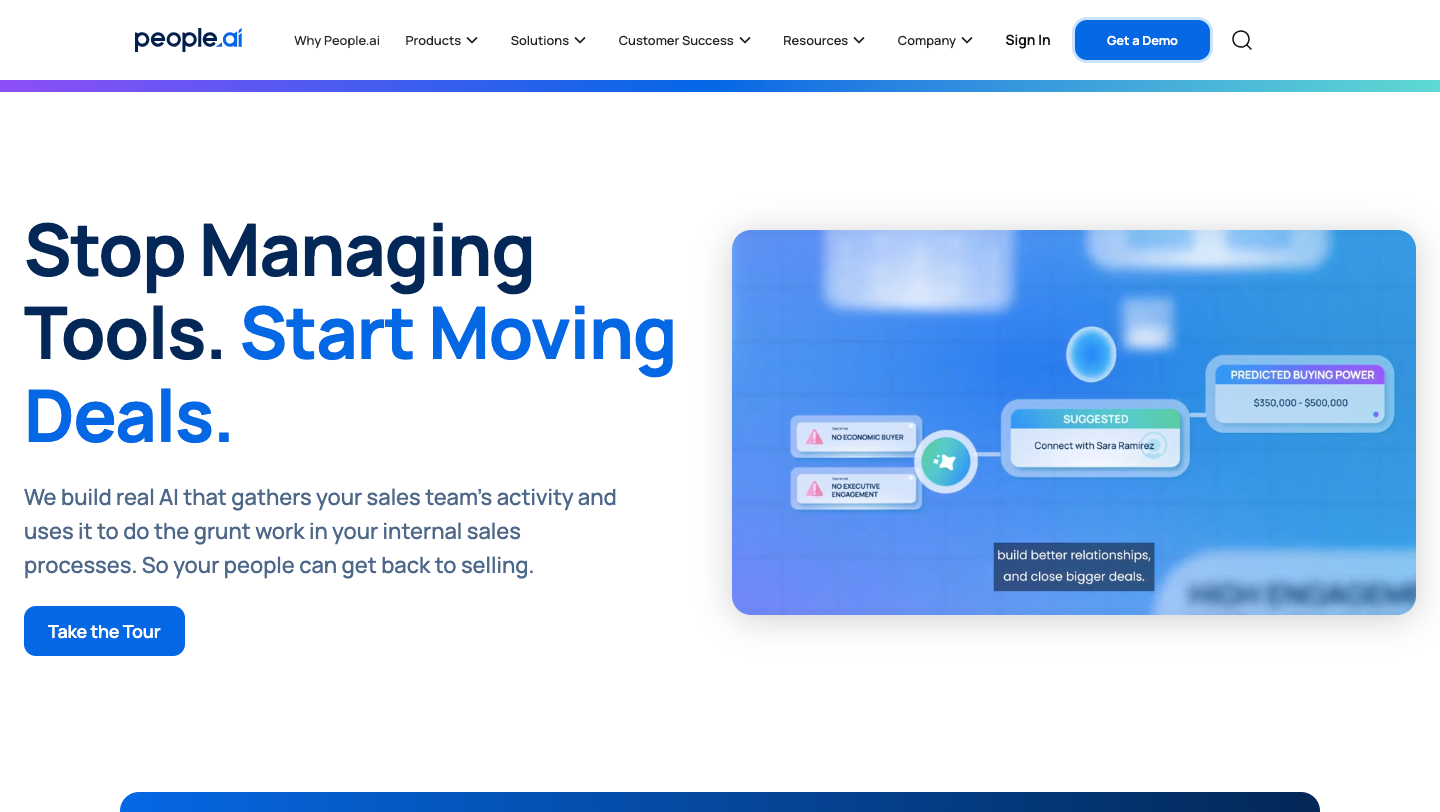
One of the biggest RevOps headaches is missing activity data. Reps don’t always log emails, calls, or meetings, which leaves CRM records incomplete and forecasts built on shaky inputs. People.ai tackles this problem by automatically capturing sales activity and mapping it to the right accounts and opportunities.
It’s effective for improving CRM hygiene, but it doesn’t extend into routing, scheduling, or forecasting — so most teams still need additional tools.
Key features
- Sales activity auto-capture – Pulls calendar events, emails, and call metadata directly, with no rep input needed.
- Contact and opportunity mapping – Automatically links activities to the right accounts, even if reps forget.
- Relationship scoring – Measures true buyer engagement based on frequency, depth, and stakeholder roles.
Pricing
Where People.ai shines
- Automation at scale – Captures every touchpoint without adding rep workload.
- Buyer engagement visibility – Reveals stakeholder coverage and engagement trends.
Where People.ai falls short
- Complex enterprise setup – Requires deep integration and IT alignment.
- Upstream-only value – Still need another tool for forecasting and orchestration.
Customer reviews
“I like how easy it is to use. People.ai simplifies activity tracking for CSMs, reviewing and evaluating the adoption stage and relationship with a customer. Some of the data doesn't seem to be very accurate, while I am not using any dialer tools, it's being recorded in my performance metrics as calls instead of meetings.” - Kateryna A., verified G2 reviewer
Who People.ai is best for
- SalesOps leaders improving CRM hygiene without adding rep burden.
- GTM teams prioritizing engagement visibility in complex sales cycles.
Gong
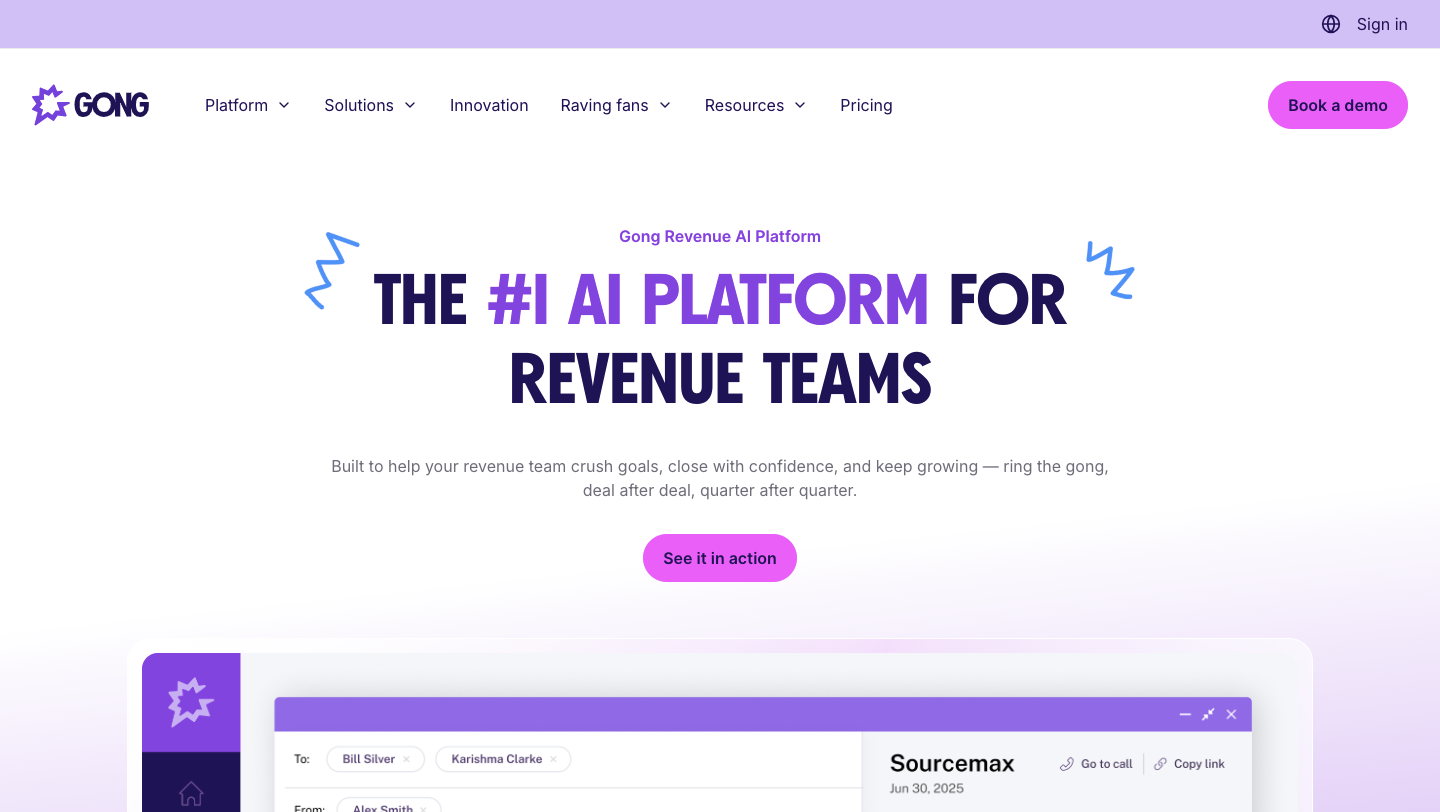
CRM fields don’t always tell the full story of a deal. Buyer sentiment, objections, and engagement patterns often live in conversations that never make it into the system. Gong solves for that by analyzing calls, emails, and demos to surface deal risks and coaching opportunities.
It’s a strong fit for conversation-heavy teams, but it doesn’t replace orchestration or forecasting — you’ll still need other tools to run the broader RevOps engine.
Key features
- Conversation intelligence – Records and transcribes sales calls, analyzing objections, engagement, and talk patterns.
- Deal health boards – Visualize pipeline risk based on actual conversations, not just CRM updates.
- Rep coaching dashboards – Compare performance metrics across reps to spot skill gaps and training needs.
Pricing
Where Gong shines
- Voice-of-customer insights – Detects risks that never surface in CRM data.
- Coaching enablement – Delivers objective data to guide rep development at scale.
Where Gong falls short
- No RevOps orchestration – Lacks routing, scheduling, enrichment, or lifecycle automation.
- Best suited for call-heavy orgs – Limited ROI if your GTM motion is email-led or low volume.
Customer reviews
“What I appreciate most about Gong is how it simplifies our workflows and supports strong follow-through. One area that could be improved is how long it takes for call analysis to complete. In some cases, waiting up to an hour for a call to fully process can interrupt the flow for reps who want to follow up quickly.” - Kelly L., verified G2 reviewer
Who Gong is best for
- Sales and RevOps leaders in conversation-heavy sales cycles.
- Enablement teams building data-driven coaching programs.
Revenue.io
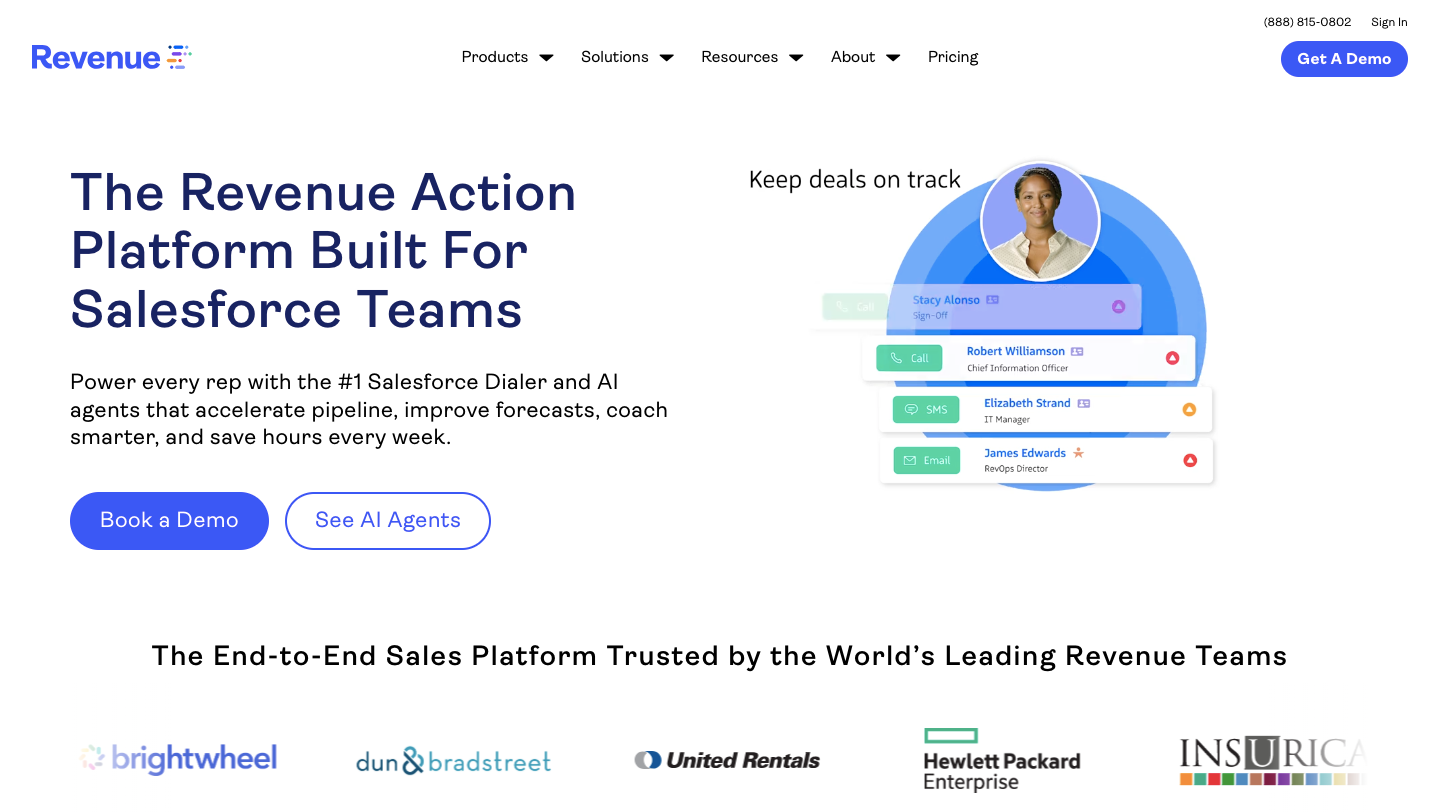
Coaching reps in real time is tough — most managers rely on call recordings after the fact, when it’s too late to influence the outcome. Revenue.io addresses this by delivering live prompts during calls, along with post-call analytics for compliance and performance.
It’s well-suited for phone-heavy sales teams, but its focus is narrow: it doesn’t handle multi-channel workflows, forecasting, or CRM orchestration.
Key features
- Live call coaching – AI-driven prompts triggered by keywords or talk patterns to guide reps in real time.
- Post-call analytics – Score recordings for sentiment, script adherence, and compliance risks.
- Performance dashboards – Track talk-time ratios, keyword usage, and behavior benchmarks across teams.
Pricing
Where Revenue.io shines
- In-call coaching at scale – Helps reps say the right thing at the right time.
- Faster onboarding – Ramps new hires quickly with guided talk tracks.
Where Revenue.io falls short
- Narrow channel focus – Optimized for phone conversations, not multi-channel motions.
- Not a pipeline platform – Requires a separate tool for forecasting and deal tracking.
Customer reviews
“As a Sales Manager at Rogers, implementing Revenue I.O has been a game-changer for my team and me. This tool has significantly enhanced our ability to coach sales representatives and streamline our prospecting workflow through automation and sequences. One of the main challenges is the initial learning curve associated with navigating and fully utilizing the tool's powerful analytics.” - Ysabelle M., verified G2 reviewer
Who Revenue.io is best for
- Enablement teams improving rep performance on live calls.
- SalesOps leaders reducing ramp time and compliance risk.
Aviso
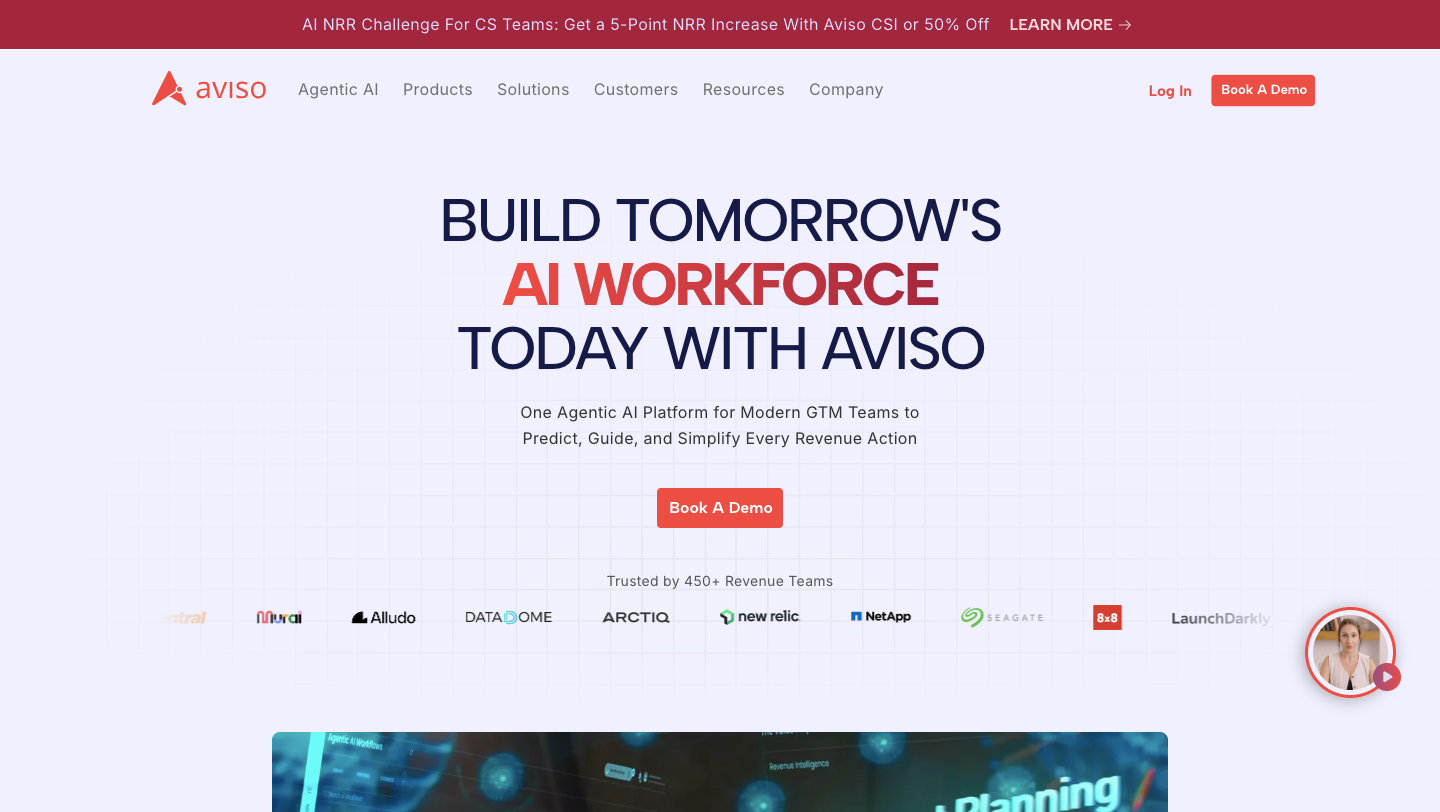
Large, global sales teams often need more than a standard forecast — they need territory modeling, scenario planning, and AI-driven risk alerts that can handle multi-region complexity. Aviso is built for that level of enterprise forecasting, offering flexibility for “what-if” revenue scenarios.
It’s powerful for advanced planning, but it comes with heavier setup and doesn’t extend into the broader GTM workflows that Default unifies.
Key features
- Territory modeling – Build and adjust complex territory structures without disrupting active forecasts.
- Scenario planning – Test the impact of changes in quotas, headcount, or market conditions before they happen.
- AI risk alerts – Identify vulnerable deals across regions and products early in the cycle.
Pricing
Where Aviso shines
- Scenario planning – Test revenue outcomes with flexible “what-if” models.
- Territory modeling – Adjust complex structures without disrupting forecasts.
Where Aviso falls short
- Setup complexity – Implementation can be heavy for large enterprises.
- Cluttered dashboards – Too much data can overwhelm daily users.
Customer reviews
“One of Aviso’s most valuable strengths is its seamless integration with Salesforce, allowing users to access and update opportunity data without switching platforms. On the downside, some of Aviso’s standard screens display more information than is typically necessary for day-to-day use. While the abundance of data can be helpful in certain contexts, it often leads to visual clutter and can overwhelm users who only need to focus on key fields or metrics.” - Alejandro G., verified G2 reviewer
Who Aviso is best for
- Enterprise RevOps teams operating across multiple regions and currencies.
- CROs needing advanced territory and quota planning tools.
InsightSquared

InsightSquared focuses on CRM-native forecasting and analytics, giving SMB and mid-market teams a step up from spreadsheets without the complexity of enterprise platforms. Forecasts and dashboards live directly in Salesforce, with customizable reports and data health checks to improve accuracy.
Pricing is flexible and role-based, offered through custom quotes.
It’s a solid fit for growing teams wanting affordable visibility, though limited compared to orchestration platforms like Default that also handle routing, enrichment, and scheduling.
Salesloft

Salesloft combines outbound sequencing with mid-funnel deal visibility, helping GTM teams keep prospecting and pipeline execution in one platform. Its core strength is cadence automation across email, calls, and social, with added overlays to monitor opportunity health.
Pricing is tiered into Advanced and Elite plans, offered via custom quotes based on team size and features.
It’s a strong engagement platform for sales teams, but it doesn’t extend into forecasting, routing, or enrichment — meaning many RevOps leaders pair it with other tools to cover the full funnel.
Outreach
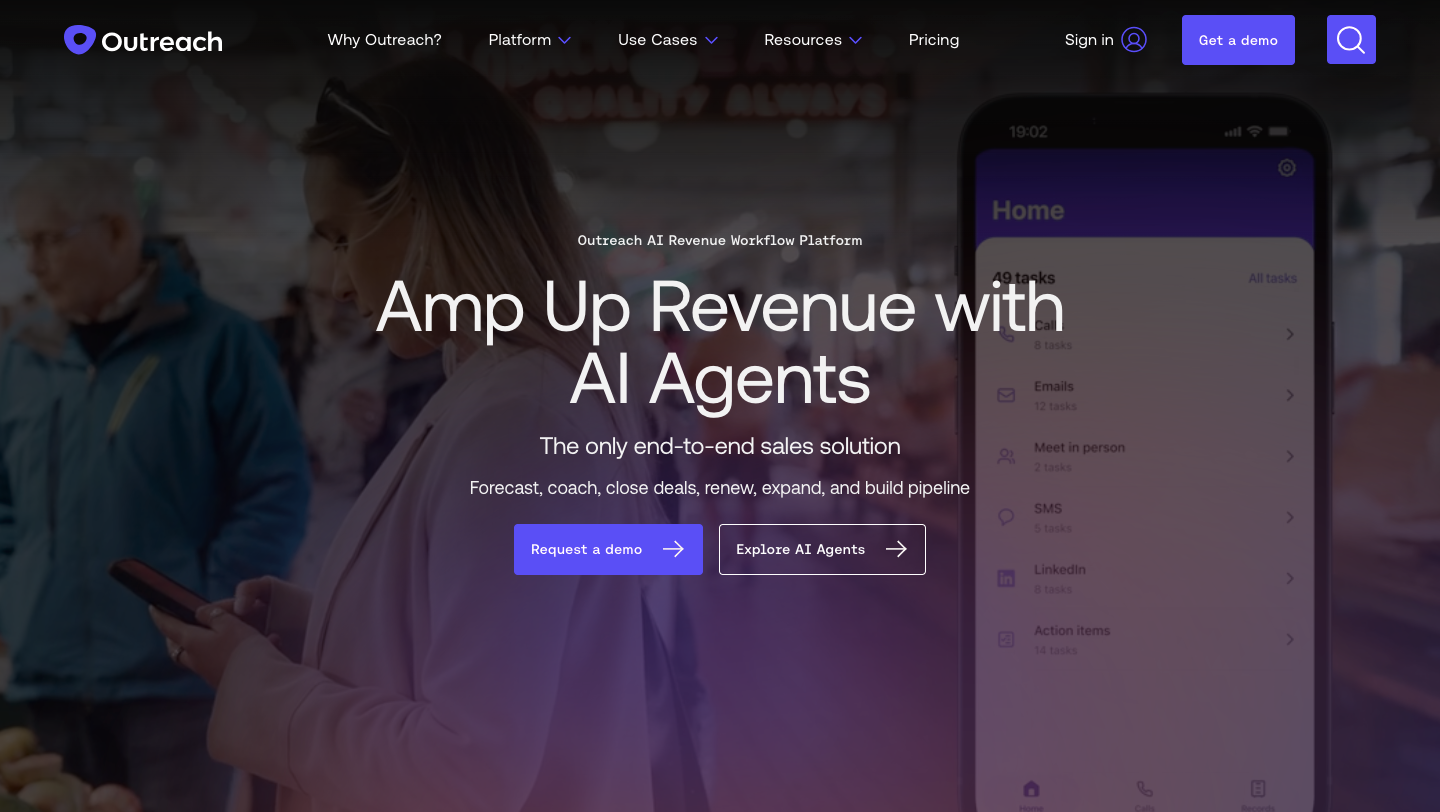
Outreach is best known for its prospecting automation, with multi-channel sequencing that helps reps maintain consistent outbound activity. In recent years it has added pipeline scoring and lightweight forecasting, creating a broader but still engagement-led platform.
Pricing is modular, with plans like Engage, Deal, Forecast, and Amplify, all sold through custom quotes.
For teams already embedded in Outreach, these add-ons provide extra visibility, but it won’t replace a true orchestration system — Default remains stronger for routing, enrichment, scheduling, and full-funnel automation.
Reasons to consider an alternative to Clari
Clari is well-regarded for forecasting, but that strength comes late in the funnel. For RevOps teams, many of the biggest challenges happen earlier — routing leads quickly, enriching records accurately, and keeping workflows connected without constant admin cycles. That’s where Clari shows its limits, and why teams often turn to Default.
Forecasting without upstream visibility
Clari is strong at opportunity-stage forecasting, but it can’t see what happens before a deal is created. Slow follow-up or enrichment gaps stay hidden until they show up as missed pipeline.
How Default helps: Track every step from form fill to opportunity. See how leads are enriched, routed, and converted with full pre-pipeline visibility.

No control over lead routing or lifecycle logic
Clari doesn’t manage routing, enrichment, or scheduling—functions often split across multiple disconnected tools.With Default:All GTM logic runs in one canvas. Route by territory, ownership, or score, while enrichment, owner assignment, meeting booking, and syncs happen instantly.
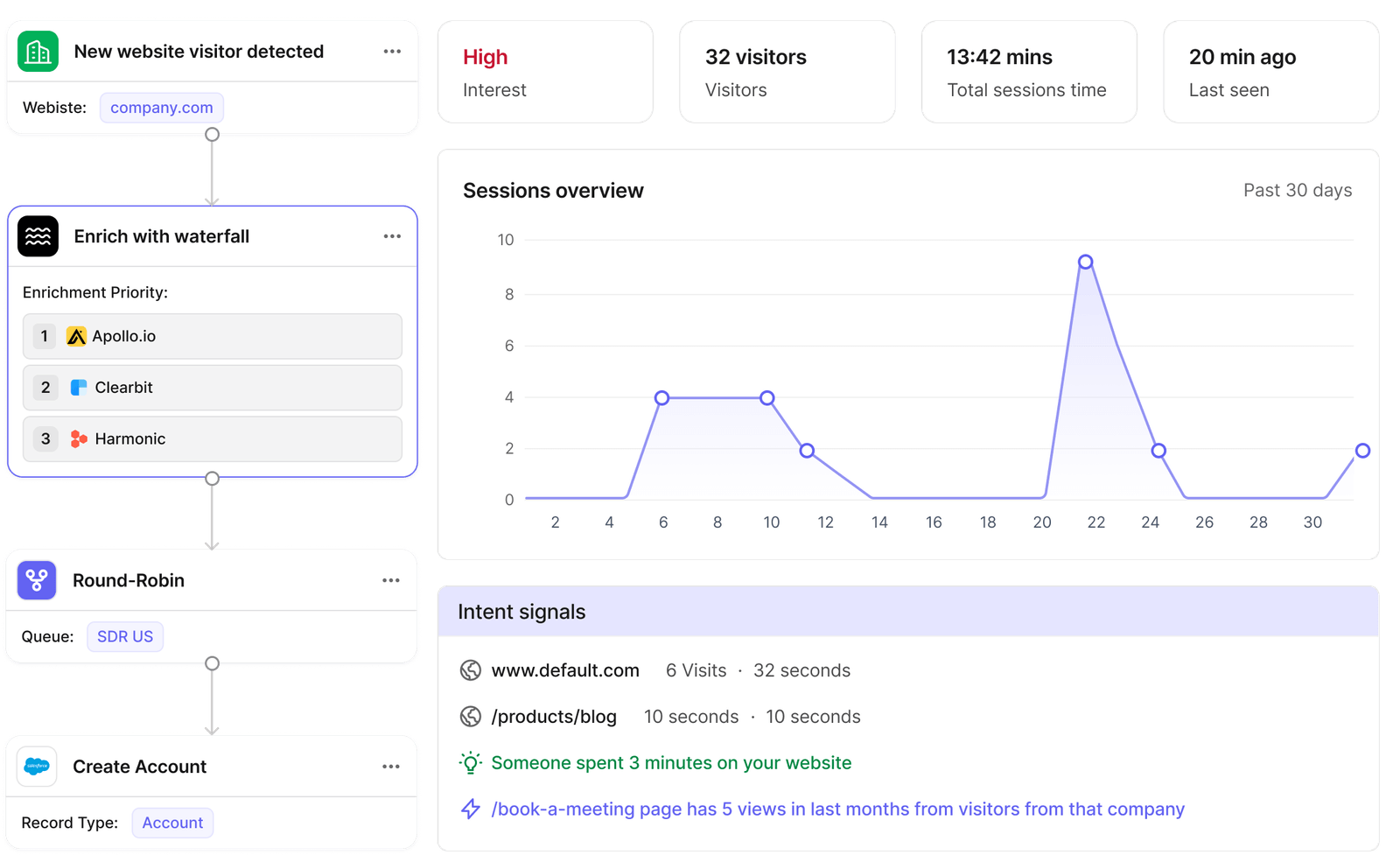
Rigid customization and long time-to-value
Adjusting forecast structures in Clari often means admin cycles, IT involvement, or vendor support delays.
With Default: Ops teams launch, update, and test workflows themselves — no code, no engineering.
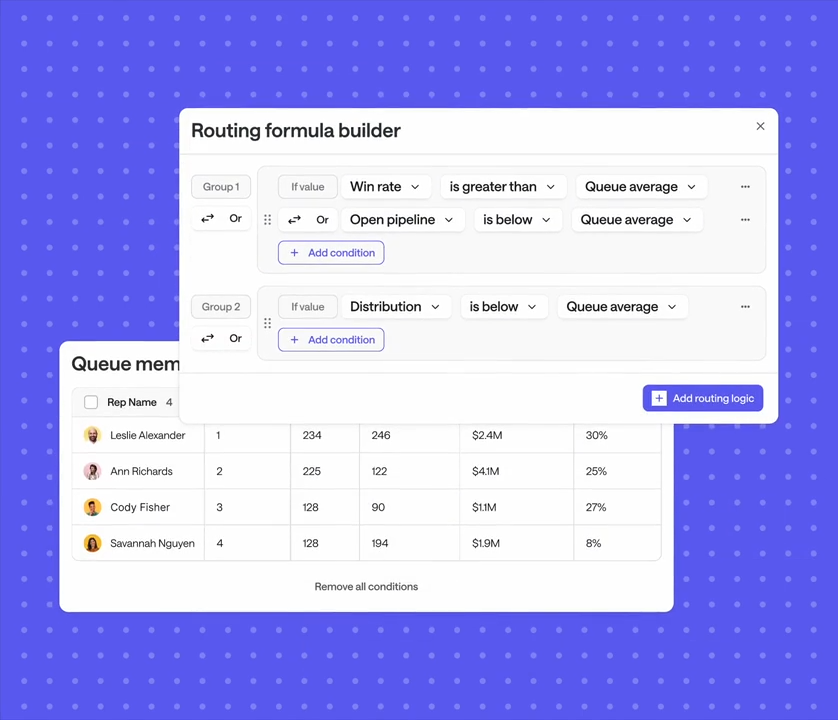
Stack bloat and tool sprawl
Many Clari customers still rely on separate tools for forms, routing, enrichment, and scheduling—adding cost and complexity.
With Default: Replace 3–5 RevOps tools with one platform, reducing spend and creating a single source of truth for GTM execution.
Want to consolidate forecasting, routing, enrichment, and lifecycle automation in one platform?
Book a demo to see how Default unifies RevOps in a single canvas.
Automate your RevOps with Default’s all-in-one platform
RevOps breaks down when leads stall, data gets messy, and workflows live across too many tools. Clari and others give you pieces of the puzzle, but not the full picture. Default changes that. One no-code platform to capture, enrich, route, schedule, and forecast — all in a single canvas.
Stop stitching systems together. Start running RevOps with speed and control.
Book a demo to see Default in action.
Conclusion

Former pro Olympic athlete turned growth marketer! Previously worked at Chili Piper and co-founded my own company before joining Default two years ago.
Accelerate your growth with Default.
Revamp inbound with easier routing, actionable intent, and faster scheduling















.png)


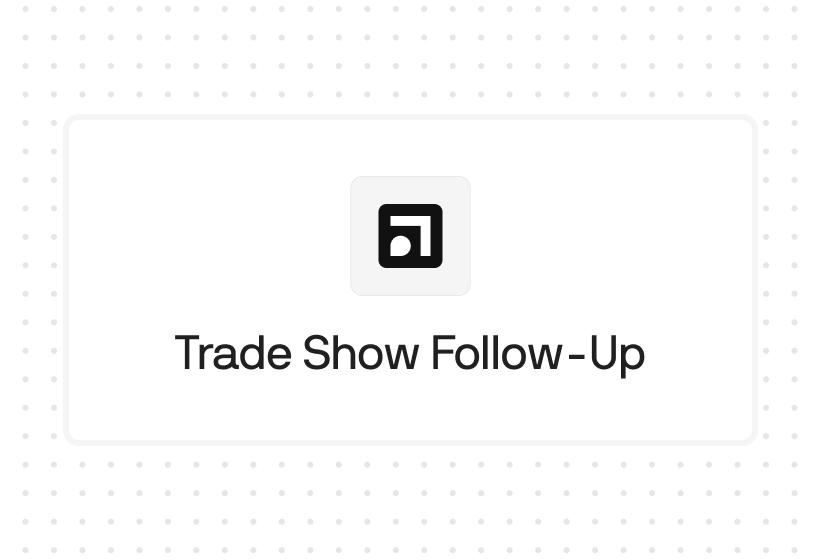
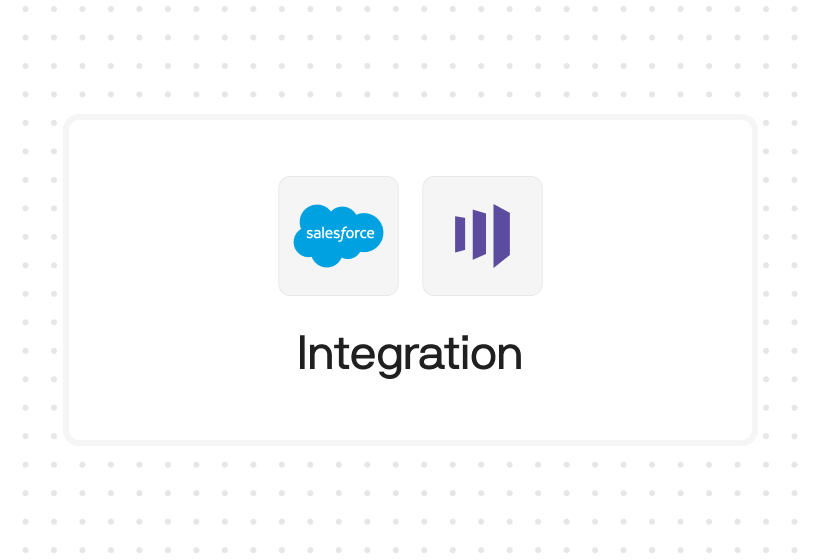




%201.svg)



.svg)





%201.svg)



%201.svg)

